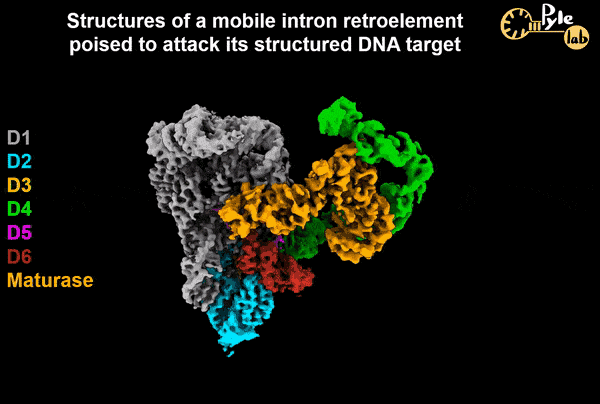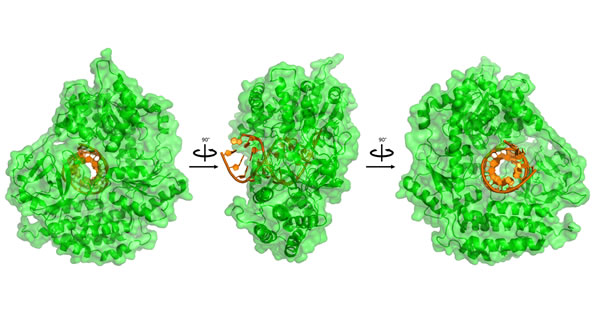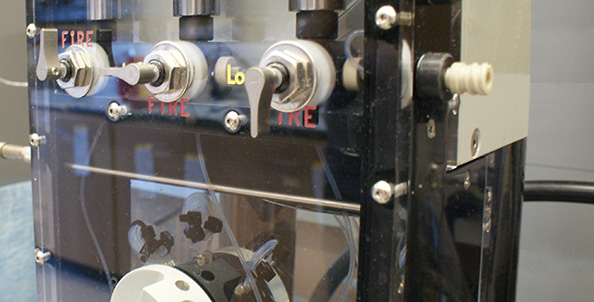-
The mechanism of genome invasion
We determined the 2.8 Å cryo-EM structure of a group IIC intron with its MarathonRT maturase and DNA target to understand the molecular recognition mechanisms behind genome invasion by this mobile retroelement.
-
Research in macromolecular structure and function
In our studies of RNA and protein enzymes, we use technical approaches that include pre-steady-state kinetics, analytical ultracentrifugation, crystallography, microscopy and cell culture.
-
Instrumentation in the Pyle Lab
State-of-the-art instrumentation on site facilitates all of our scientific investigations.
-
Three views of RIG-I bound to duplex RNA
The RIG-I innate immune receptor is a "surveillance protein" that helps us detect and combat viral infections. We solved its structure and showed how viral RNA (gold) is recognized by the RIG-I protein (green).
-
DNA-RNA synthesis and mechanistic analysis
We make our own modified DNA and RNA, using chemical synthesis to produce unusual nucleic acids for the study of molecular recognition.
-
Large noncoding RNAs have elaborate structures
Our studies on the group II self-splicing intron shows that large noncoding RNAs can adopt elaborate tertiary structures, enabling them to catalyze complex reactions.
-
Rapid quench instrument for analysis of enzyme kinetics
To understand the molecular mechanisms of catalysis by our enzymes, and to probe their structures, we employ a diversity of enzymological techniques.







